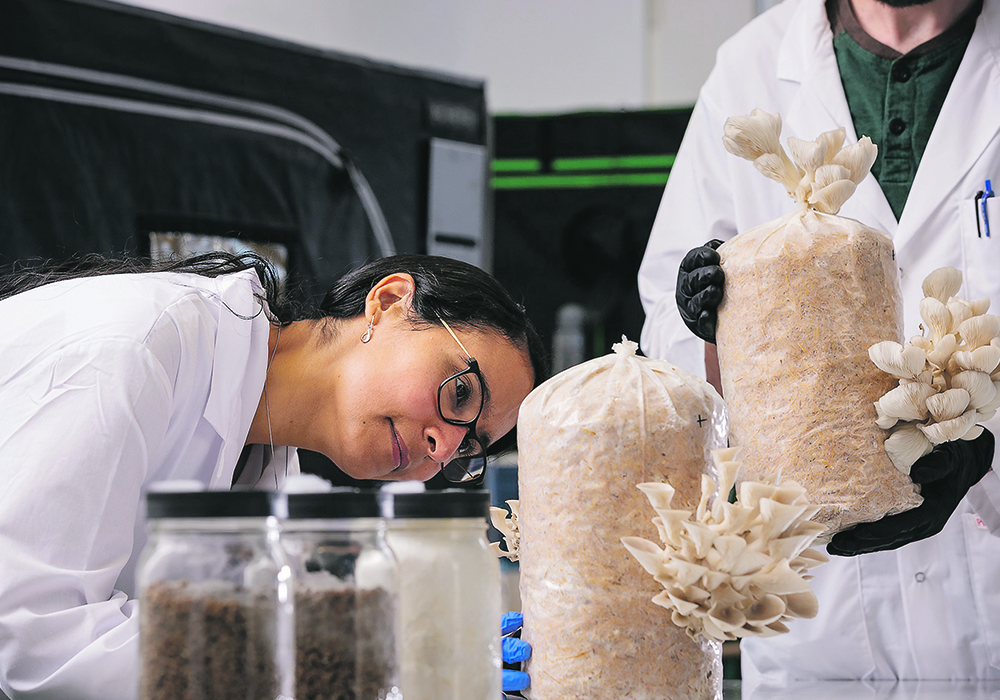Study is analyzing different substrates used for growing mushrooms that would otherwise be considered food waste
What started as a hobby for a Lethbridge College researcher has turned into a project examining how to best grow mushrooms which, in turn, are being used by the school’s culinary students to cook dishes.
For the last six months, Adriana Morrell, an agricultural sciences instructor, has been growing blue, king and pink oyster mushrooms at the college’s mycology lab, providing the fruits of her labour to culinary students who otherwise had limited access to the expensive ingredient.
Morrell said the research is based on analyzing different substrates used for growing mushrooms that would otherwise be considered food waste.
“I realized many of the things we use at home, such as coffee grounds, eggshells and brewers spent grain — because my husband brews his own beer — can be used as substrates for mushroom production,” said Morrell.
It’s not a one-way street with the college’s culinary program with students contributing its food waste to the mycology lab to grow the mushrooms they get access to, said Morrell.
The research is also using hemp straw, which would usually be discarded, for substrate to grow mushrooms.
By using different substrates, the research project examines how to interact with the mushrooms to produce different colours and tastes, while reducing production costs.
The project is focused on sustainability and adding value to waste products to produce a high-cost commodity.
The college’s mycology lab is still in its infancy, starting from scratch last year to producing a box of gourmet mushrooms a week with Morrell hoping to expand to growing mushroom spawn for growers.
“Everything is very learn as you go. There is no research in this so, for us, we would like to tell producers maybe 10 percent coffee grounds to add to your substrate is the best ratio to give you the best colour, the best yield,” said Morrell. “Or maybe it’s 20 percent coffee grounds or 50 percent. These are tests that we can do at our facility to give answers to producers.”

Using discarded eggshells for nutrients is also being examined as a low-cost alternative to gypsum.
“We’re actually working on bringing (to the culinary students) lion’s mane mushrooms — a medicinal mushroom but also a gourmet mushroom, very unique,” she said.
That could be a possible commercial use for restaurants.
“That’s something that restaurants could be interested in if they wanted to showcase that they harvested something so fresh that it’s still growing when harvested and I’m putting it on a plate in a matter of minutes,” said Morrell.
She said she is hoping a future project for the lab would examine the different taste profiles of different mushrooms grown in various substrates.
The lab is also hoping to examine the role of fungi on native rangeland and restoration of grasslands.
















